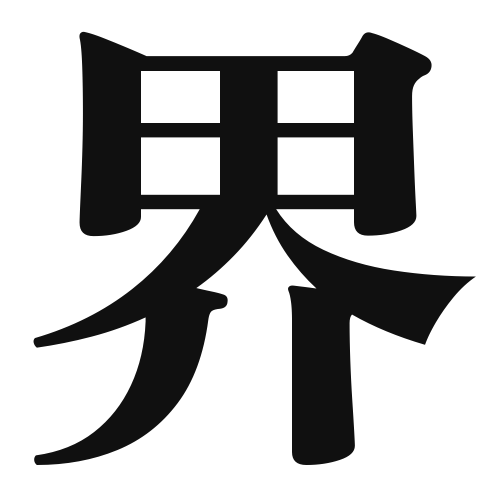1. Overview of Meaning
The kanji “界” (kai) generally means “world,” “boundary,” or “realm.” It represents the concept of a distinct area or domain, often used to describe different fields or environments.
2. Formation and Radical
Formation of the Kanji: The kanji “界” is a compound character, which means it is formed by combining different elements. It is classified as a compound ideograph (会意文字), where the components convey a combined meaning. The left part “田” (rice field) suggests a physical space, while the right part “界” (boundary) indicates a limit or border.
Radical: The radical of “界” is “田” (rice field), which often relates to land or area in various kanji.
3. Examples of Usage
Common Words and Phrases: Some frequently used words that include “界” are:
- 世界 (sekai) – world
- 境界 (kyoukai) – boundary
- 業界 (gyoukai) – industry
Example Sentences in Daily Conversation:
- 私たちは新しい世界を探求しています。 (Watashitachi wa atarashii sekai o tankyuu shiteimasu.) – We are exploring a new world.
- この境界を越えることはできません。 (Kono kyoukai o koeru koto wa dekimasen.) – We cannot cross this boundary.
4. Synonyms and Antonyms
Similar Kanji: A similar kanji is “域” (iki), which also means “area” or “region,” but it often refers to a more specific or defined space compared to “界.”
Antonyms: An antonym for “界” could be “無” (mu), meaning “nothing” or “non-existence,” as it represents the absence of boundaries or realms.
5. Cultural and Historical Background
Relation to Japanese Culture: The concept of “界” is significant in Japanese culture, often used in contexts like “世界遺産” (sekai isan) meaning “world heritage,” which emphasizes the importance of preserving cultural boundaries.
Proverbs and Idioms: One common idiom is “境界を越える” (kyoukai o koeru), which means “to cross boundaries,” often used to describe breaking limits or exploring new possibilities.
